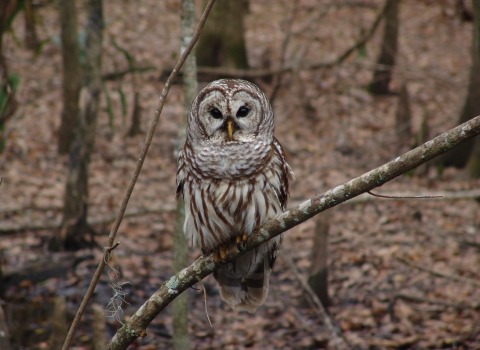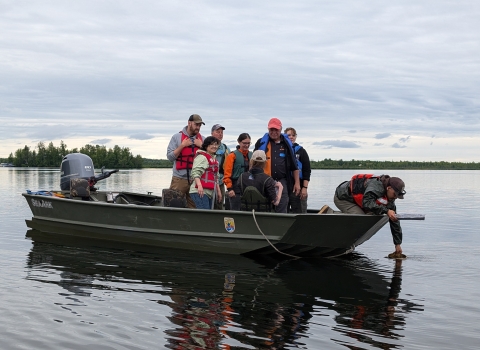The U.S. Fish and Wildlife Service (Service) has finalized critical habitat under the Endangered Species Act (ESA) for the yellow lance, a freshwater mussel found only in the rivers and streams of North Carolina, Virginia and Maryland. The species was listed as threatened under the ESA in 2018 following population declines due to habitat loss and degradation.
“Critical habitat is a specific geographic area that is essential for the conservation of a threatened or endangered species,” said Leo Miranda, Regional Director for the Service’s Southeast Region. “Like other freshwater mussels, the yellow lance is an important indicator species for healthy streams and rivers. By working with the North Carolina Wildlife Resources Commission, and other partners, we can help conserve this species, and its habitat for future generations.”
The eleven critical habitat units designated for the yellow lance sit within the Patuxent, Rappahannock, York, James, Chowan, Tar and Neuse River Basins in North Carolina, Virginia and Maryland.
Totaling 319 river miles, the units fall within Franklin, Granville, Halifax, Johnston, Nash, Vance, Wake and Warren Counties, North Carolina; Brunswick, Craig, Culpeper, Dinwiddie, Fauquier, Louisa, Lunenburg, Madison, Nottoway, Orange and Rappahannock Counties, Virginia; and Howard and Montgomery Counties in Maryland. All units are currently occupied by the yellow lance and do not include upland habitats, only streambeds to the high-water mark. No unoccupied units have been designated.
“The North Carolina Wildlife Resources Commission has been working with the U.S. Fish and Wildlife Service and others to recover the yellow lance. Conservation efforts include habitat protection, research and producing yellow lance in a hatchery to stock back into suitable habitat,” said Todd Ewing, the agency’s aquatic wildlife diversity program manager. “We look forward to continuing our partnership with the Service to recover this and other species.”
In February 2020, the Service proposed critical habitat for the yellow lance and asked for public comment. The agency received 23 comments on the proposed rule during the public comment period. All substantive information was addressed and incorporated directly into the final rule.
Adjacent to the yellow lance’s critical habitat are private, state and conservation lands and easements. This designation has no impact on those private lands. Critical habitat designation does not affect land ownership or establish a wildlife refuge, reserve, preserve or other conservation areas.
Landowners will not be required to convert their adjacent land to forest or to conduct yellow lance monitoring as a result of this designation. Rather, critical habitat designation highlights areas important to yellow lance conservation and recovery, raises public awareness and focuses the efforts of the Service’s conservation partners.
Critical habitat for the yellow lance overlaps with the habitat of other federally listed aquatic wildlife that have similar management needs, like the James spinymussel, dwarf wedgemussel, Tar River spinymussel and the Roanoke logperch. A draft economic analysis (DEA) prepared for the proposed critical habitat designation showed there would be minimal additional regulatory activity because of conservation measures already in place for other listed species. Since no comments were received on the DEA, the Service has adopted the DEA as a final version.
The rule Docket No. FWS-FWS-R4-ES-2018-0094 is is available and has an effective date of Monday, May 10, 2021.
Read frequently asked questions about the final critical habitat designation for the yellow lance.


